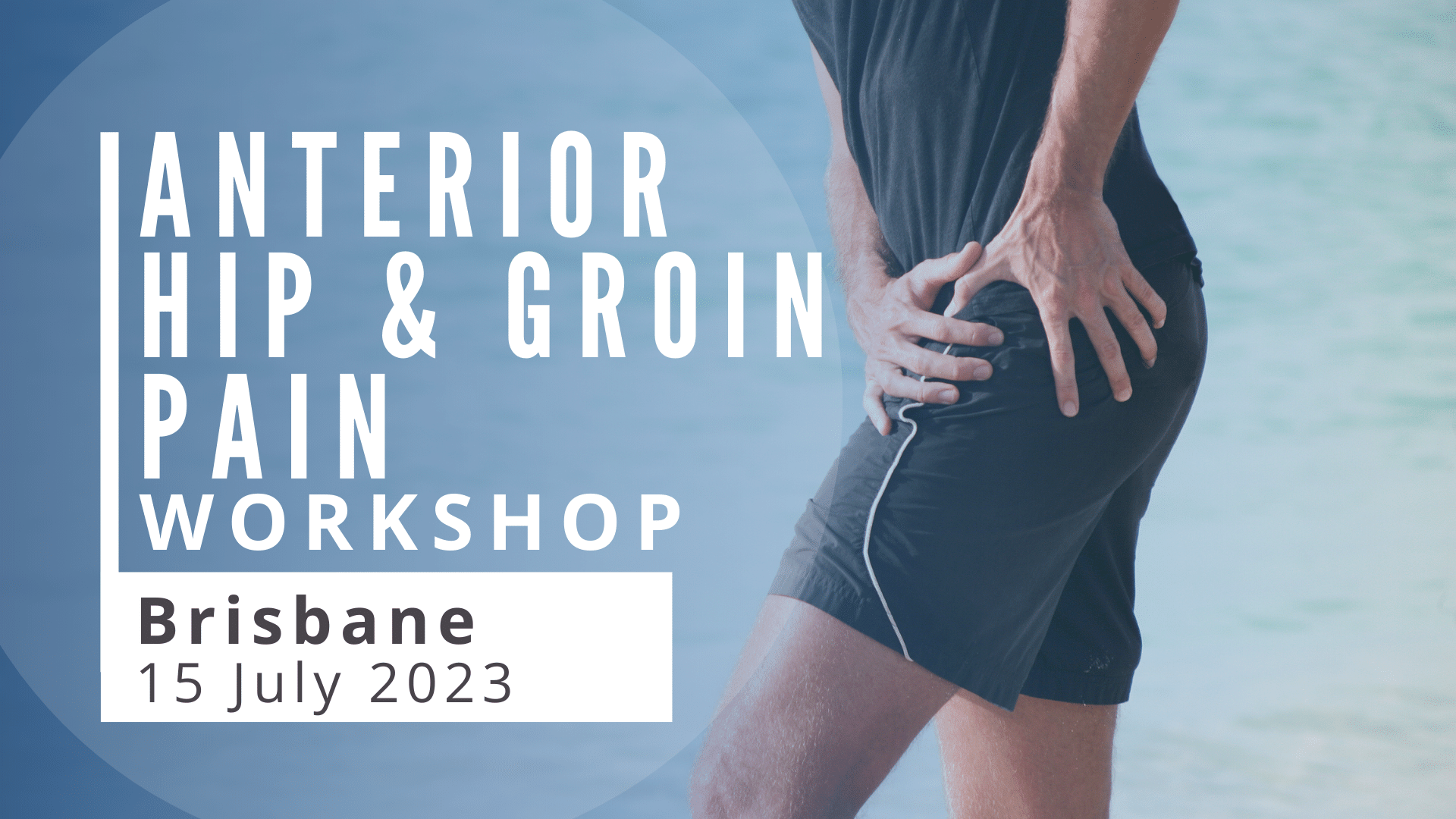
- This event has passed.
Anterior Hip and Groin Pain Workshop | Brisbane 2023
July 15, 2023 @ 8:15 am - 4:30 pm AEST
AUD $500.00
Contemporary Diagnostic & management strategies for Anterior Hip & Groin Pain
Hip course for physiotherapists and other health professionals
Suitable for physiotherapists and other health professionals involved in diagnosis and rehabilitation of patients with anterior hip or groin pain.
Synopsis
Do you find yourself using the same management approaches for patients with hip pain, regardless of their presentation?
Do you have a clear understanding of how morphology, loading patterns and muscle dysfunction may be driving anterior hip and groin pain?
Would you like to learn how to address these issues to optimise and FAST-TRACK YOUR OUTCOMES?
An exploration of the available anterior hip and groin pain literature reveals a minefield of inconsistent diagnostic labels and a high volume of imaging and surgical papers describing a myriad of pathologies which may or may not be associated with a patient’s presenting signs and symptoms. In recent years there have been some positive advances in defining clinical entities and diagnostic processes. Yet there is a persistent lack of clarity and evidence around best management. This may be related to undue focus on remediating a particular structural pathology or physical impairment, without adequate consideration of mechanisms or drivers of pain and load intolerance. Within the contemporary biopsychosocial model, health professionals acknowledge that patients may present with varying combinations of psychological and physical overload. While the psychosocial components of management are of high importance, these will not be addressed in detail within this forum, but much education is widely available on this topic. The primary focus will be on understanding and addressing mechanisms of physical overload and impairments associated with anterior hip and groin pain.
Learning Objectives
This course aims to:
- Enhance clinical reasoning, and skills for assessment of nociceptive sources, clinical entities and drivers associated with anterior hip & groin pain
- Provide a framework for development of optimally effective, targeted interventions for each individual that considers
- Morphological variants & implications for load management advice, exercise therapy and manual therapy
- Adverse joint or soft tissue loading associated with kinematics and neuromotor function
- Individual goals and functional demands
- Provide opportunity to practice some useful manual therapy and nerve mobilisation techniques
Learning Objectives: Upon completion of this course, participants should be able to:
- Perform diagnostic tests for anterior hip and groin pain and use that information for differential diagnosis of the most likely source of nociception or a primary clinical entity
- Perform tests that aim to elicit important information regarding potential contributors or drivers of the presenting condition, such as:
- bony morphology
- joint range-of-motion & stability
- neurodynamics
- posture & key movement patterns
- Determine the most appropriate management approach for an individual’s presenting condition using:
- Key information from the patient interview & physical examination
- Treatment direction tests
- Clinical reasoning
- Load management strategies
- Exercise therapy
- Manual therapy and nerve mobilisations as appropriate
Online Theory
The substantial theoretical component of this course is presented in an online learning format for your flexibility and optimal learning experience.
- 5 hours of PowerPoint lectures with printable notes.
- Learn anywhere, at your own pace, in your own time.
- Rewind and revise as many times as you like.
- Self-assessment quiz.
- 3 months of unlimited access to video content
The online component aims to:
- Clarify definitions of anterior hip and groin pain
- Explore factors which may influence intra-articular hip joint loads
- morphological variants (eg., FAI, acetabular dysplasia, femoral version, capsulo-labral deficits)
- adverse joint loading associated with kinematics and neuromotor function
- the adequacy of joint protection mechanisms
- Explore factors which may influence extra-articular loads in the anterior hip region
- morphological variants (eg.. AIIS/Subspine Impingement)
- adverse soft tissue loading associated with kinematics and neuromotor function (focus on hip flexors)
- Provide an overview of key load management and therapeutic exercise strategies for anterior hip pain, particular to the patient presentation and associated difficulties with mechanical load transfer.
- Provide an update on groin pain clinical entities and where the literature sits with regard to prevention and management.
Practical Workshop
The one-day practical workshop will include:
- Diagnostic, pain provocation tests for intra & extra-articular sources of nociception
- Assessment of bony morphology, joint stability and neurodynamics
- Assessment of posture & key movement patterns for specific pain & load intolerance presentations
- Examples of treatment direction tests (passive & active) & clinical reasoning strategies to determine best approach for reducing pain & improving load tolerance for the patient’s specific presentation
- Load management advice & key exercise strategies for specific presentations related to a wide range of hip conditions:
- Femoroacetabular Impingement Syndrome (FAIS) and extra-articular impingement (AIIS impingement, subspine impingement)
- Anterior hip instability associated with acetabular dysplasia and/or capsuloligamentous deficiency (hypermobility/EDS, trauma, iatrogenic)
- Anterior hip pain associated with femoral malversion (excessive femoral anteversion or femoral retroversion)
- Hip osteoarthritis
- Hip flexor related pain, iliopsoas tendinopathy/iliopsoas bursitis, anterior snapping hip (internal coxa saltans)
- Groin pain with focus on adductor related groin pain
- Nerve related anterior hip pain
- Manual therapy – some useful techniques for specific range gaining and improving painfree ROM with be demonstrated
Manual will be supplied.
Includes light refreshment for morning and afternoon tea.
Bring your own lunch or there are plenty of nearby options to explore.
